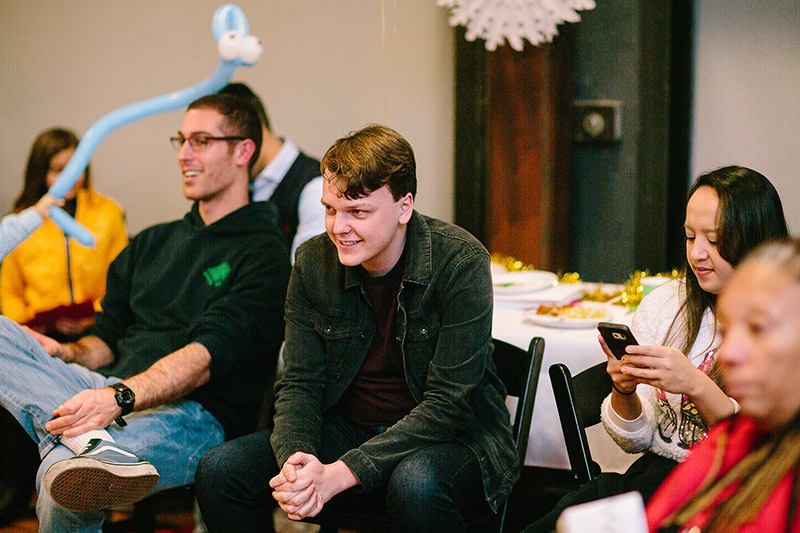RESOURCE 16
The Audience’s Burden: How Positive Community Conquers Fear

Facing the fear of public speaking shouldn’t only be up to the speaker -- the audience has an essential role to play in making situations less nerve-wracking in the first place. While every public speaker has a lot of work to do to feel more prepared and ready to embrace discomfort, the audience carries the burden of creating a space that welcomes what people have to offer. It takes courage to put your voice into the world and that courage should be welcomed by eager listeners who are ready to learn, especially in schools and classrooms.
Audience Behaviors That Make Things Worse
Regardless of age or experience, the worst case scenario for most public speakers is that people will dislike them and what they say. This is especially the case for young children and adolescents, who are afraid of being laughed at or stereotyped. They are therefore hyper aware of audience behavior, including facial expressions, actions, and responses. In general, speakers actually hold audiences to a fairly high standard -- they are looking for engaged faces and people who will remember what they say and be moved by their remarks. Most audience members, on the other hand, hold themselves to an incredibly low standard, treating listening as a passive activity or chance to do nothing. Passive audiences are ones who somehow think that no one can see them as they watch the speaker, when in reality, their actions are actually discouraging and distracting. This translates into physical behavior that includes:
- Looking tired or bored (e.g. scowling at the speaker)
- Fidgeting and noisy nervous habits (e.g. pen-clicking or playing with chair)
- Spacing out or looking vacant (e.g. head on table or arm)
- Looking distracted or impatient (e.g. glancing at the time or going on the phone)
Changing the Audience Mindset
The solution isn’t to fake interest or sit in the audience with a plastered smile; rather, the audience’s role is to actively listen to the speaker and contribute to an environment that invites new ideas. In the classroom, a positive sense of community goes a long way to ease the fear of public speaking. Remind students that as an audience member, their burden is to:
- Be present and show they are listening.
- Avoid making it harder for the speaker to do his or her best work.
- Consider ways they can ease the speaker’s doubts and fears.
- Facilitate people’s voices through their behavior or participation.
- Take on the role of the learner -- actively try to learn something.
- Delay any judgment until the speaker is finished.
Setting People Free
It is not always possible for anyone to be the perfect audience member: after all, everyone has moments where they feel tired, uncomfortable, disinterested or frustrated by what someone is saying. It is important to react and engage honestly and authentically and it can be difficult to be a helpful audience member in some situations. The takeaway is to rethink the job of an audience member and consider ways that audiences can contribute to helping people feel free of doubt, anxiety, and fear as they communicate and lead. When classrooms are inclusive places where people are genuinely eager to learn from one another, it is easier to let go of the fear of being judged. To become leaders who listen, students need role models and facilitators to guide them in creating positive learning environments where people look out for one another and appreciate diverse voices.


